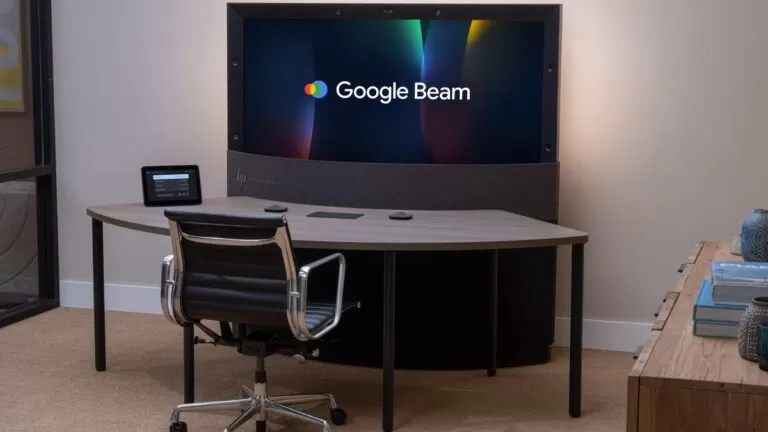Revolutionizing Virtual Meetings: HP and Google Team Up to Bring 3D Conferencing to Life!
The way we work and communicate has drastically changed in the past year. With the ongoing pandemic, virtual meetings have become the new norm, and companies are constantly looking for ways to enhance the experience. In this pursuit, HP and Google have joined forces to bring a game-changing technology to the table – 3D conferencing powered by AI. This collaboration is set to revolutionize virtual meetings and take them to a whole new level.
HP has always been at the forefront of innovation, and their latest venture with Google is no exception. Their new technology, called “Beam,” is a combination of HP’s advanced hardware and Google’s AI software. It aims to bridge the gap between physical and virtual meetings, providing a more realistic and immersive experience for participants.
So, what exactly is 3D conferencing, and how does it work?
Imagine being able to see your colleagues or clients in a lifelike 3D holographic form, as if they were right in front of you. That’s precisely what Beam offers. Using HP’s advanced 3D cameras and projectors, the system creates a 3D image of the participants and projects it onto a 3D display. This, combined with Google’s AI software, enables real-time tracking and movement of the holographic images, creating a seamless and natural interaction between participants.
One of the biggest advantages of this technology is that it eliminates the need for bulky VR headsets or special glasses. Participants can simply use their laptops or mobile devices to join the meeting, making it more convenient and accessible for everyone. This is a significant improvement from traditional video conferencing, where participants often struggle to maintain eye contact due to the limitations of the 2D screen.
But what truly sets Beam apart is its ability to create a 3D environment for the meeting. It uses AI to generate a virtual room, complete with furniture and other elements, making it feel like a physical meeting space. This not only enhances the overall experience but also allows participants to interact with the virtual environment, making presentations and collaborations more engaging and interactive.
The potential of this technology is immense, and it has already caught the attention of many industries. From corporate meetings to virtual events, Beam has the potential to transform the way we communicate and collaborate in a virtual setting.
But how does it compare to other similar technologies in the market?
While there are other 3D conferencing solutions available, Beam stands out for its advanced AI technology and realistic 3D imaging. Other solutions, like Microsoft’s HoloLens, require participants to wear bulky headsets, limiting their movements and interactions. In contrast, Beam offers a more natural and immersive experience without any additional equipment.
Moreover, Beam’s AI software has the ability to process large amounts of data in real-time, making the interactions between participants more seamless and natural. This is a crucial factor in virtual meetings, as any lag or delay can disrupt the flow of communication.
But HP and Google’s collaboration is not just limited to 3D conferencing. It also includes a range of other features that aim to enhance the overall virtual meeting experience. This includes real-time translation of languages, transcription of meetings, and even the ability to add 3D models and images to the virtual environment. These features not only make meetings more efficient but also cater to a diverse audience, making it easier for people from different backgrounds to communicate and collaborate effectively.
The potential for this technology goes beyond just virtual meetings. With the rise of remote work and the need for virtual events, Beam has the potential to transform the way we conduct business and interact with each other. It can also have a significant impact on the education sector, where virtual classrooms can be transformed into more interactive and engaging spaces, providing students with a more immersive learning experience.
But like any new technology, there are some challenges that need to be addressed. The biggest concern is the cost of implementing this technology, which may be out of reach for smaller businesses. However, as the technology advances and becomes more accessible, we can expect to see a wider adoption of 3D conferencing in the future.
In conclusion, HP and Google’s collaboration to bring 3D conferencing to life is a game-changer in the world of virtual meetings. It has the potential to bridge the gap between physical and virtual interactions, making them more realistic and engaging. With its advanced AI technology and range of features, Beam is set to revolutionize the way we communicate and collaborate in a virtual setting. And as the technology continues to evolve, we can expect to see more innovative solutions that will change the way we work and connect with others in the years to come.
Referência:
Clique aqui



0 Comments